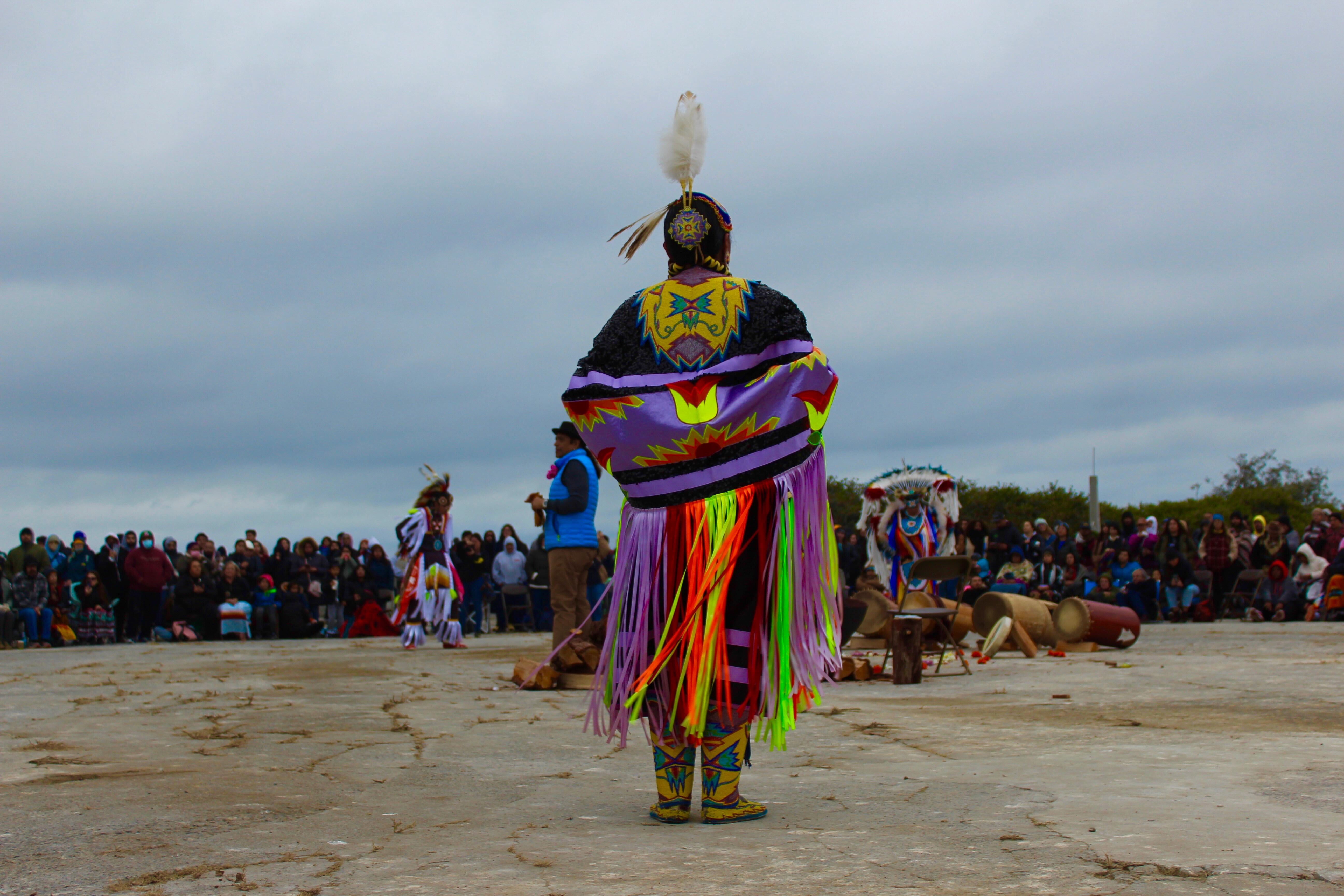On Monday morning, long before the rising sun broke through the clouds, 53 Stanford students boarded a ferry from San Francisco to Alcatraz Island. After a steep uphill hike, they arrived at a cliff overlooking the San Francisco skyline. There, surrounding a bright fire, they merged into a crowd of hundreds of people celebrating the 2023 Sunrise Ceremony.
This ceremony, organized every year since 1975 (except in 2020 when it was held over radio), brings together Indigenous people from across the Americas to share chants, prayers, songs, dances and speeches.
According to the organizers, the International Indian Treaty Council (IITC), the Sunrise Ceremony connects the larger Native American community, recognizes one’s ancestors and remembers a historic protest that occurred on Alcatraz Island.
In 1969, six years after the closing of Alcatraz Federal Penitentiary, a group of 89 Native Americans sailed to Alcatraz Island from San Francisco Bay. Dubbed Indians of All Tribes, the protestors aimed to occupy the land on the grounds that the 1868 Treaty of Fort Laramie required that unused federal land be given back to Native Americans.
They managed to bypass a Coast Guard blockade which had been set up after earlier takeover attempts. The occupation ended after 19 months, when armed federal marshals and FBI agents swarmed the island.
Taily Terena, a climate activist from the Terena Nation of Brazil, spoke at the invitation of IITC. Terena called the celebration “a good day to be Indigenous” and recognize Indigenous resistance in the face of ongoing colonial legacies. Terena also acknowledged Native people from the Southern Hemisphere, including those of Guatemala, Mexico and Panama.
For student TaSheena Thompson ’26, the ceremony was an opportunity to be united with the Native community.
“Native people at Stanford are seen as a minority, so being part of a community and being able to come here and celebrate this day as Indigenous people is super special,” Thompson said.
After kicking off with an Ohlone welcome, the event featured traditional performances by Pomo dancers, Voladores de Papantla, Aztec (Mexica) dancers and All Nations drum. An Intertribal Pow-Wow dance circle included a variety of styles such as Jingle Dress, Grass, Men Fancy and Fancy Shawl Dancers.
Lauren Rose Reyes ’25 hopes that “in the near future, Native students on campus can successfully work with the University to get Indigenous Peoples Day officially recognized by Stanford.” Reyes hoped this would make it easier to participate in traditions like Sunrise Ceremony, especially if students needed to miss classes.
Students closed Indigenous Peoples Day with a candlelight vigil hosted by the Stanford American Indian Organization on White Plaza, sharing stories, poems, songs and traditional dances. During one performance, dancers Kanoe Aiu M.S. ‘23 and Camille Slagle ’24 from the Pacific Islander Student Association danced to “Ka Uluwehi O Ke Kai” (“Plants of the Sea”).
Kanoe explained that they chose the song to honor Isabella Aiona Abbott, Stanford’s first Native Hawaiian faculty member and first full female professor in the biological sciences division. Abbott dedicated her life to understanding the ocean, an important part of Pacific Islander culture.
In 1898, eight years after the University opened its doors to students, John Milton Oskison made history as the first Native American to graduate from Stanford University.
Today, there are more than 450 Indigenous undergraduate and graduate students representing more than 50 tribes and island communities studying at Stanford.
Mahina Kaomea ’25 and Kyran Romero ‘24 performed an original song inspired by the trip to the Sunrise Ceremony. Surrounded by the candlelight, Kaomea sang, “I woke from my ferry fever dream to laughter, to friends who have become family. And I thought that maybe we are those ‘Natives from all tribes’ that our ancestors dreamed of, ready to take it all back.”
